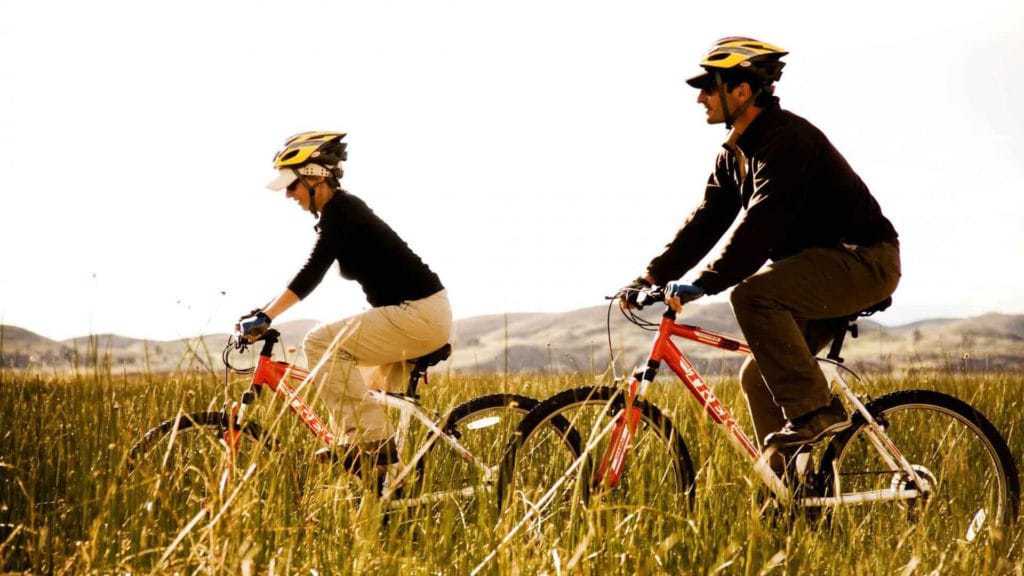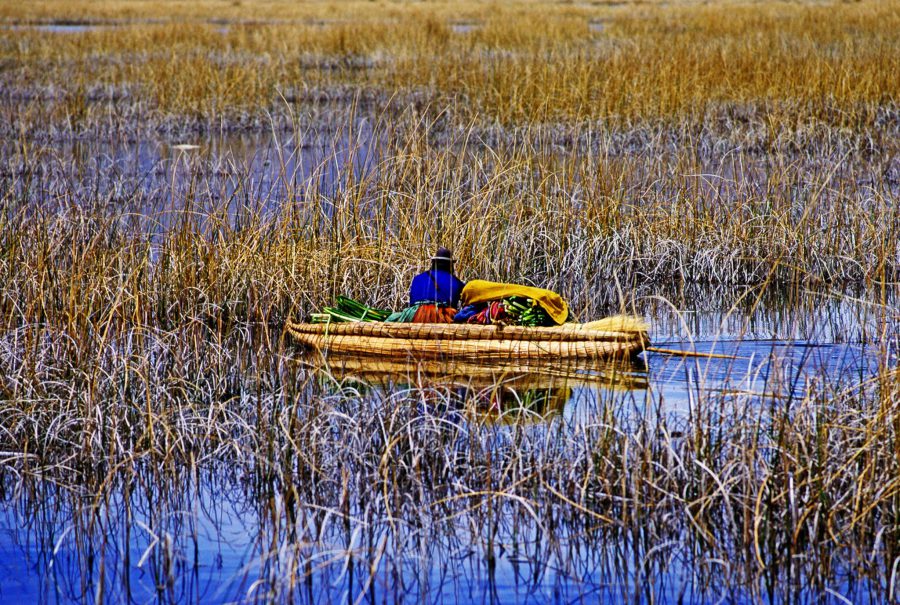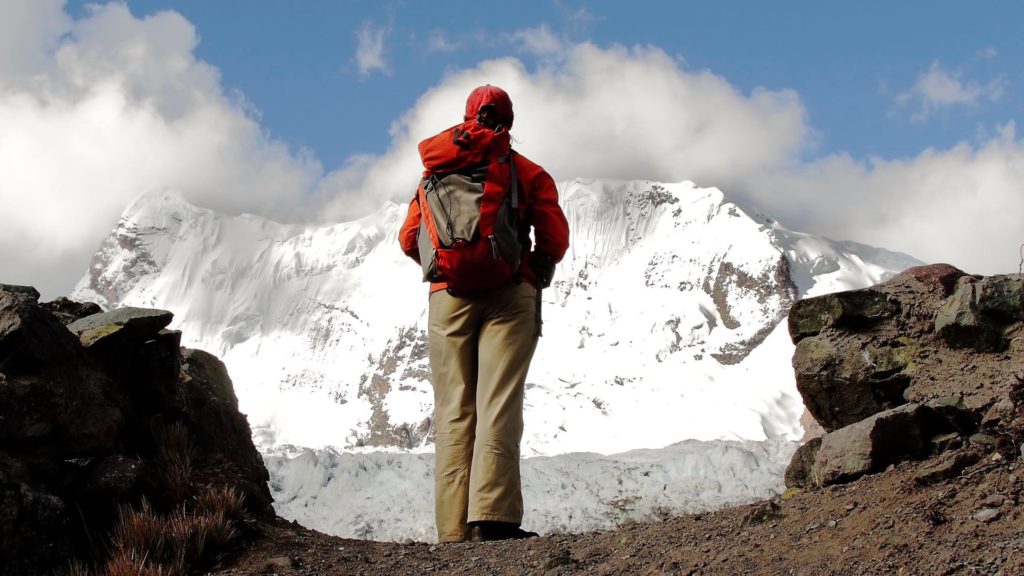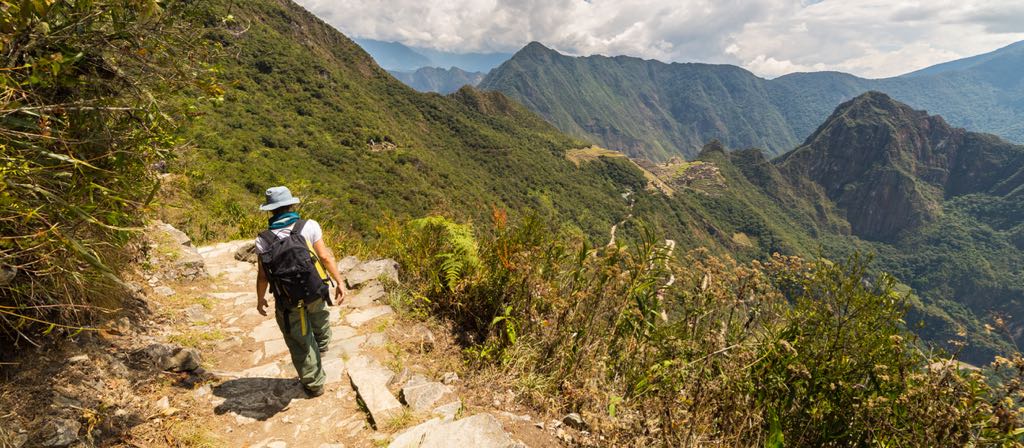Lake Titicaca isn’t just a lake—it’s a living, breathing tapestry of history, culture, and contradictions. Perched high in the Andes, it feels like the edge of the world, where ancient myths swirl in the crisp mountain air and daily life carries on as it has for centuries. This isn’t a destination for the faint of heart—it’s for travelers who crave authenticity, grit, and the kind of beauty that doesn’t ask for permission to be raw.
Our Ultimate Puno – Lake Titicaca Travel Guide is your backstage pass to this high-altitude marvel. We’ll break it down: the essentials (location, weather, and travel options), the flavors (where to eat and what to try), and the stories (floating islands, hidden traditions, and places that feel like whispers from another time).
Puno’s streets pulse with life, and the lake itself is a mirror to the gods. This isn’t just a guide—it’s your blueprint for experiencing a place that doesn’t just ask to be seen but demands to be felt. Let’s dive in. Lake Titicaca awaits, unapologetically unforgettable.
Lake Titicaca Meaning: The Rock of the Puma
The name Lake Titicaca is rooted in the ancient languages of the Andean region, particularly Aymara and Quechua. While interpretations vary, the most widely accepted meaning is “Rock of the Puma.” This comes from two Aymara words: “Titi” meaning puma and “Caca” meaning rock.
Legend has it that the lake’s name originates from a sacred rock on Isla del Sol (Island of the Sun), one of the most important spiritual sites of the Inca civilization. Additionally, some say the lake’s shape resembles a crouching puma when viewed from above, further linking the name to this revered Andean animal.
Lake Titicaca Facts: Why is Puno special?
Nestled on the shores of Lake Titicaca, Puno is a vibrant destination that draws travelers year-round to its stunning landscapes and rich traditions. Its unique location makes it the perfect gateway to the world’s highest navigable lake, surrounded by breathtaking mountain views and timeless culture.
Puno offers unforgettable hikes to viewpoints with sunsets and moonrises that stretch across mountain ranges and even into neighboring countries. Explore vibrant mercados, where artisans and producers showcase local crafts and flavors, or stroll through lively plazas filled with the rhythm of daily life.
The magic of Puno lies in its blend of natural beauty and cultural depth. From the floating islands of Uros to the traditions of Taquile and Amantaní, the connection between land, lake, and community is palpable. Here, history comes alive in the crafts, celebrations, and enduring spirit of its people. Whether through Titicaca travel or Puno City itself, this is a place that stays with you, long after you’ve left.
Lake Titicaca Facts: Where is Puno located?
Puno, located in southeastern Peru, is a well-connected hub that offers easy access to some of the country’s key destinations and a short hop to Bolivia. Its strategic position makes it an ideal starting point for Titicaca travel and exploring Puno’s rich cultural offerings.
Reaching Puno is simple, whether by plane, train, or bus. For those traveling from Cusco, an overnight bus ride offers a chance to rest during the seven-hour journey, leaving you refreshed and ready to dive into your Puno tours.
From Arequipa or Colca Valley, the trip is even shorter, clocking in at just under seven hours. Travelers coming from La Paz, Bolivia, can reach Puno in a little over five hours by bus, making it a convenient cross-border journey.
Whether you’re heading to Puno to explore the legendary Lake Titicaca, its vibrant markets, or its rich traditions, getting there is part of the adventure.
How High is Lake Titicaca?
Lake Titicaca, the world’s highest navigable lake, is situated at an impressive elevation of 12,507 feet (3,812 meters) above sea level. Nestled between Peru and Bolivia in the Andes Mountains, this iconic destination offers breathtaking views and a serene high-altitude environment.
Its remarkable height not only makes it a natural wonder but also creates a unique cultural and ecological setting that attracts travelers from around the globe. Whether you’re planning a Titicaca travel adventure or exploring its surrounding islands, visiting Lake Titicaca is an unforgettable experience. Remember to prepare for the high altitude by acclimatizing and staying hydrated for a comfortable and rewarding journey.

Puno City, perched on the shores of Lake Titicaca, offers breathtaking views of its expansive waters and the surrounding mountain ranges of both Peru and Bolivia. At a refreshing high altitude, this city is the perfect base for exploring the region’s natural beauty and cultural treasures.
Your Lake Titicaca travel adventure can take you on island-hopping tours or scenic routes by land, each offering unique insights into the lake’s charm. Beyond the lake itself, your travel to Puno opens the door to nearby gems like Amaru Muru, the mysterious stone portal shrouded in legend, and the Peninsula of Chucuito, home to the welcoming Luquina community.
Don’t miss a visit to Sillustani, with its ancient funerary towers, or the tranquil Llachón community on the Peninsula of Capachica, where you can experience traditional Andean culture up close. Whether by water or land, Puno offers a rich tapestry of adventures that make it a must-see destination.

The Puno Cathedral or Catedral Basílica San Carlos Borromeo is an Andean Baroque cathedral in Puno, Peru
Lake Titicaca Facts: How to get to Puno and Lake Titicaca
First of all, transport options for Puno will depend on your departure city, schedule and budget.
To keep it simple, though, consider the following:
Arriving by Plane and Taxi (your quickest path)
- Take an hour flight from Cusco to Juliaca, and then grab a one hour cab from Juliaca to Puno.
- Leave from Lima and arrive in Juliaca two hours later, and then travel to Puno in a taxi from there.
If you would like us to arrange this form of travel please contact us.
Taking a Luxury Train (your longest and most luxurious path)
- Ride in style and comfort leaving Cusco and traveling to Puno on the Luxury Belmond Andean Explorer train: Spirit of the Water, which departs every Tuesday morning.
If you would like us to arrange this form of travel please contact us.
Traveling by Bus (your most economical path)
Two options are tourist buses (with tourist stops) and public buses (without any tourist stops).
Since these buses carer for different travelers, they provide different experiences.
Some cities consequently offer you a choice between the types of bus and bus companies.
-
Cusco to Puno
- The Inka Express tourist buses are very highly rated. Their buses travel to Puno from Cusco every morning at 6:50am, while they offer an itinerary of brief guided stops for exploration and eating along the way. In addition to visits to Andahuaylillas, Raqch’i, Sicuani, Abra La Raya and Pukara Museum, the Inka Express buses still arrive in Puno by 5:20pm.
- Cruz del Sur is a comfortable public bus that travels from Cusco to Puno. Furthermore, their trips leave twice a day at 8am and at 10pm and last six hours and 30 minutes.
-
Arequipa to Puno
- The Cruz del Sur public buses leave Arequipa three different times every day depending on the type of bus you choose. This trip also lasts six hours and 30 minutes.
-
Chivay (Colca Valley) to Puno
- 4M Express travels to Puno from Chivay in the Colca Valley, leaving every day at 1:15pm and arriving at 7:30pm. This tourist bus travels more quickly than others of its class due to fewer stops.
-
La Paz to Puno
- There are a few different public buses that travel to Puno from La Paz multiple times a day, so check out NC Internacional, Trans Titicaca and Tour Peru.
Please contact us for more information.

Experience Lake Titicaca and all it has to offer.
Lake Titicaca Facts: Managing Altitude Sickness in Puno
At an impressive elevation of 12,500 feet (3810 meters), Lake Titicaca travel is a remarkable experience—but its high altitude presents a unique challenge. Acclimatizing to this elevation requires preparation, patience, and a few practical steps to ensure your comfort and enjoyment.
To ease the transition, it’s best to acclimatize gradually. Spend a couple of days at lower elevations, such as the Sacred Valley or Arequipa, before heading to higher-altitude destinations like Cusco, Colca Canyon, and finally, Puno. This gradual ascent helps your body adjust to the thinner air and reduced oxygen levels.
Once in Puno, follow these tips to minimize the effects of altitude sickness:
- Hydrate: Drink plenty of water to combat the dryness of the high-altitude climate.
- Breathe deeply: Inhale slowly and fully to help your lungs adjust.
- Pace yourself: Walk more slowly than usual and take frequent breaks, especially when climbing or exerting yourself.
- Coca and Muña tea: Sip these traditional herbal teas, known for their altitude-relief properties, to help you adapt naturally.
Lake Titicaca Facts: Weather in Puno
Like other parts of Peru, Puno enjoys two seasons: rainy and dry.
The wettest months are in January and February, while the driest months extend from May through September.
For a warmer time of year, travel to Puno in October or, if you favor cooler weather, visit in January.
Most noteworthy is that while there is a relatively consistent range of temperatures throughout the year, they vary greatly during any given day.
For example, in the months of June and July, you may experience sun and warmth up into the low 60s F (15° C) during the day and given the extreme altitude it will be vital to use sunscreen.
Especially relevant is to remember that even with sun a brief moment in the shade can warrant wearing a fleece.
By nightfall, during those same months the temperatures drop into the low 20s F (-6° C), so you will need a jacket that is much warmer than a fleece.
As for Titicaca travel during the months of June and July, your days will probably get up in to the 70s F (20° C) and your nights fall into the 40s F (4° C).
Therefore, your best bet is always to wear layers that are easy to remove and add on as suits you.

Discover Lake Titicaca with a sustainable trip in LLachon community or Luquina in Puno.
Now that we’ve covered the basic Lake Titicca facts, let’s get to the fun stuff!
Lake Titicaca Facts: What to do in Puno City – Things to do in Puno
This city is an excellent place to see things because there are vistas, buildings of significance, museums and venues for people watching.
Some of the most noteworthy recommendations include:
View and climb
- Mirador de Kuntur Wasi (Condor Hill)
Significant spots from the 17th and 18th centuries
- El Arco Deustua (near Plaza de Armas)
- Cathedral Basilica of St. Charles (at the center of Plaza de Armas)
- La Casa del Corregidor (near Plaza de Armas): Jirón Deustua 576 -Puno
Museums
- Museo Municipal Dreyer: Jirón Deustua 289 -Puno
- Yavari Ship Museum – Museo Naval: Avenida El Sol 725 -Puno
- Museo de la Coca y Costumbres: Ilave 581 -Puno
Shopping and people watching
- Mercado Artesanal
- Mercado Central
- Casa de la Mujer Artesana: Jirón Puno 645 -Puno
- K’antu
- Parque Pino
Lake Titicaca Facts: What to eat in Puno
Like the rest of Peru, Puno has a selection of dishes that are unique and tasty.
Due to the altitude, you may wish to eat lighter as digestion takes longer the higher in elevation you go.
Having said that, given Peru’s 3800 varieties of potatoes, you will undoubtedly find these accompanying most of your main meals.
You will also discover that rice comes with many dishes.
And, if you are lucky, you will see takti (a type of fried bread) on the menu.
Finally, some other traditional fare to try are trout and suche (a local fish), stews and soups like huaitia and chairo, lechon al horno (baked pork), chalona, or dried meat, and salteña (small pastries stuffed with meat, potatoes and spices).
Lake Titicaca Facts: Top attractions in Puno area
Uros Floating Islands: Exploring the Wonders of Lake Titicaca
The Uros Floating Islands are one of the most fascinating highlights of Lake Titicaca, offering a unique glimpse into an ancient way of life. These man-made islands, with their distinctive yellow hues, are constructed entirely from buoyant totora reeds—a technique mastered by the Uros people over centuries.
Visiting the Titicaca lake floating islands is more than just a stop; it’s an immersive experience. Learn how these floating homes are built and maintained, discover the resourceful ways the Uros people have adapted to life on the lake, and even take a ride on a traditional reed boat. This cultural wonder combines ingenuity and tradition, making it a must-visit destination during your Lake Titicaca travel adventure.
If you linger a little longer, you will also get to see the ornate weaving the local women craft to tell the story of Uros.
- Luxury Titicaca Travel trip including visit Uros & Taquile Islands ( 3 days)
- Fully Experience local Life on Lake Titicaca – Sustainable Tourism ( 2days)
- Ausangate trek 5 days 4
- inca trail 2 days portada 1
Taquile Island: A Lush Gem on Lake Titicaca
Taquile Island, a vibrant oasis on Lake Titicaca, is a thriving landscape of greenery, florals, and ancient traditions. Its lush plants and trees create a striking contrast against the surrounding high-altitude terrain, while the water at its edges shimmers in an almost magical clear aqua hue—unique to this island.
A visit to Taquile Island offers more than just stunning scenery. You’ll have the chance to uncover the hidden uses of the island’s plants, which play a vital role in the community’s traditional way of life. Opting for a homestay takes this experience to the next level, allowing you to connect with local families and gain deeper insights into their customs, weaving traditions, and everyday life.
Taquile isn’t just a destination; it’s a window into a culture that thrives in harmony with its lush surroundings, making it a highlight of any Lake Titicaca travel itinerary.
Amantani Island: A Serene Escape on Lake Titicaca
Amantani Island, with its earthy beige hues, offers a tranquil and immersive experience on Lake Titicaca. This island is renowned for its rotating potato harvest, a unique agricultural practice that shifts from one side of the island to the other annually—a fascinating detail you’ll learn as you explore its rugged beauty.
Hiking to Amantani’s highest point rewards visitors with breathtaking views of the sunrise or sunset, casting a golden glow over the expansive lake and surrounding Andes. For a deeper connection, participate in a homestay with a local Aymara family. Not only will you savor those freshly harvested potatoes, but you’ll also gain insight into the rhythms of island life, from traditional customs to daily practices.
Amantani isn’t just a stop on your Lake Titicaca travel—it’s a peaceful retreat where the beauty of nature and the warmth of its people leave a lasting impression.
Sillustani: A Pre-Incan Wonder Near Lake Titicaca
Located about 20 miles (34 kilometers) north of Puno City, on the serene banks of the Umayo Lagoon, Sillustani is a captivating archaeological site that showcases the rich history of the region. This pre-Incan above-ground cemetery was built to honor the Aymara elite, and its cylindrical stone tombs, known as chullpas, remain a source of fascination.
These towering chullpas are both mysterious and beautiful, with their intricate stonework and unique shapes that defy time. Visiting Sillustani offers not only a glimpse into the spiritual practices of the Aymara people but also stunning views of the surrounding lagoon and high-altitude landscapes.
Whether you’re exploring Lake Titicaca travel or delving into the region’s ancient history, Sillustani is a must-see destination that combines mystery, culture, and breathtaking scenery.
Llachón Community: A Cultural Gem on the Capachica Peninsula
Perched at the edge of the Capachica Peninsula, the Llachón community offers an authentic and immersive experience for travelers seeking to connect with the traditions of the Aymara people. A homestay here provides a rare opportunity to share in the daily life of the locals, embracing their food, culture, and warm hospitality.
Beyond the cultural exchange, Llachón offers adventure. Hike to a breathtaking vista over 13,000 feet (4000 meters) above sea level, where you’ll be rewarded with panoramic views of Lake Titicaca’s vast beauty. From the shimmering waters to the distant mountains, the scenery is nothing short of awe-inspiring.
The Llachón community is more than just a destination—it’s a place where traditions and natural beauty come together, leaving travelers with lasting memories and a deeper appreciation of the region’s heritage.
Chucuito village and Chucuito Peninsula
About 11 miles (18 kilometers) south of Puno City you’ll find this tiny pueblo best known as a result of its phallic stone structures.
In addition to these, though, there is Chucuito’s rich colonial history, lavish construction and beautiful views of the lake.
Luquina community – Chucuito Peninsula
At the edge of the Chucuito Peninsula, a little over 30 miles (53 kilometers) east of Puno City, is Luquina Chico.
This rural Aymara community offers homestay opportunities on the shore of the lake that is unparalleled, as it has not been as affected by tourism like the more frequently visited islands of Titicaca.
Amaru Muru
South of Puno City lies what some believe to be an abandoned Incan construction project.
Therefore, the image itself is something to see and the stories surrounding Puerta de Hayu Marca (‘Gate of the Gods’) are definitely something to hear.
But, most of all, to experience the mystery and energy firsthand is truly something unique.
Lake Titicaca Facts: Best activities to do in Puno
Community-Based Tourism: A Deeper Connection to Lake Titicaca
Visiting South America’s largest lake and the world’s highest navigable body of water, Lake Titicaca, is undoubtedly a memorable experience. Yet, it’s more than just breathtaking views—it’s an opportunity to step into preserved living cultures, where life is shaped by the resources of the land and lake.
Through community-based tourism, you’re invited to experience a deeper side of travel, far from the typical tourist trail. Securing a Puno tourist guide and joining one of the many Puno tours opens the door to a world of traditions, stories, and everyday practices that have thrived for centuries.
The true beauty of Titicaca travel lies in the invitation it extends—to not just observe but to engage. You become a part of this rich history, sharing in the lives of the local communities, and leaving with a deeper understanding of their connection to the land and water. This is travel at its most meaningful—a journey that stays with you long after you’ve left the shores of Lake Titicaca.
.
Kayaking at Lake Titicaca: An Adventure on the Water
Experience Titicaca travel like never before with an up-close and personal kayaking adventure on the world’s highest navigable lake. With options ranging from one to three-day tours, you can explore the serene waters and nearby islands at your own pace, creating an unforgettable connection with this iconic destination.
Each tour offers unique starting points and itineraries, allowing you to customize your experience. Whether you’re paddling near the Uros Floating Islands or venturing to the shores of Taquile or Amantani, every moment promises breathtaking views and cultural encounters.
Don’t worry about logistics—pick-up and all necessary gear are provided, ensuring a seamless adventure. Get ready to glide across the shimmering waters of Lake Titicaca and discover its beauty from a whole new perspective.

Original kayak during your stay at Titilaka Lodge.
Biking
If two-wheeling it is your preferred mode of transport, then you are in luck.
Because there are opportunities to see the land and lake from a bike as well.
These biking trips range in length; therefore you can enjoy half and full day adventures.
The bulk of your gear and some other incidentals are provided so as to ensure comfort and safety.
Finally, remember to give yourself a day or two to acclimatize to the altitude.
This is especially relevant if you will be undertaking even mildly strenuous physical activity.

Biking experience with Titilaka Boutique Hotel.
Hiking
Because this is a place of such natural beauty, there are many types of walking and hiking trips available for your Titicaca travel.
So why not combine this beauty with local culture by taking part in a homestay on one of the peninsulas or islands?

Sinuous Inca trail at sunset on Amantani’ Island with Amantica Lodge.
While Puno is a great destination year-round, the best time to visit depends on the type of experience you’re looking for. Whether you prefer clear skies or vibrant cultural festivities, planning your Titicaca travel accordingly will ensure an unforgettable journey.
Traveling during the dry season (May to September) is ideal for its pleasant weather, perfect for exploring the lake, islands, and surrounding landscapes. However, if you’re drawn to cultural celebrations, early February offers an extraordinary opportunity to witness La Fiesta de la Virgen de la Candelaria, one of Peru’s most significant festivals.
Held from February 2-18, this vibrant event transforms Puno into a stage for dazzling displays of music, dance, and tradition. Nearly 70 groups, each with over 100 dancers, compete in a spectacular dance competition dressed in colorful, traditional attire. As the festivities spill into the streets, parades of up to 300 performers in jeweled devil and demon costumes take over, creating an electric atmosphere.
Firecrackers light the night, the rhythms of traditional music fill the air, and the joy of the Candelaria Virgin Feast envelops everyone. Visiting Puno during this time isn’t just about seeing the celebration—it’s about becoming a part of it. It’s an experience that sets Puno apart and makes your Lake Titicaca travel truly unforgettable.
Lake Titicaca Facts: Where to stay in Puno – Puno Hotels
Eco Inn ***
On the edge of the lake, this inn offers Titicaca travel that is comfortable, clean, and catered.
As well as providing space for conferences and events, they have a business center should your Titicaca travel experience include a little work along with play.
Sonesta Posada del Inca ***
Due to its outstanding views from the rooms and from the Inkafe Restaurant Bar, this beautiful lakeside hotel is a Peruvian paradise.
Furthermore, you might even find llamas happily grazing on the lawn.
Casa Andina Premium ****
Since it is part of a cluster of Casa Andina hotels, this Puno location delivers the same level of quality, care and comfort as its sister spots throughout Peru.
Hotel Libertador *****
Located on the private island of Esteves, Hotel Libertador displays the beauty that abounds in Titicaca travel.
Especially relevant is the quality of the accommodation and dining, which – as would be expected from such an lovely venue – is immaculate.
Boutique Hotel Titilaka
For remarkable luxury catering to a minimal number of guests, this boutique lodge really delivers.
Due to its placement at the tip of a land mass, surrounded by the lake, it provides exclusivity and bliss.
The facilities, food and service are unparalleled when it comes to your Titicaca travel experience.
- Ausangate trek 5 days 8
- Ausangate trek 5 days 7
Amantica Lodge
This accommodation’s uniquely designed rooms are reason enough to stay at Amantica Lodge.
Due to its clever indoor-outdoor architecture, every available vantage point of the lake has been put to good use.
Guests are also provided with extreme comfort and privacy, perfect for any Titicaca travel adventure.
There you have it, all the Lake Titicaca facts to help you prepare for and plan for your trip. And have an amazing experience while you’re there!
Like it? Pin it!









